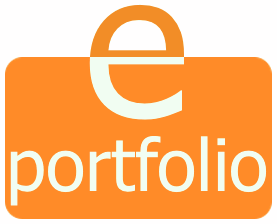12 Important Tends in the ePortfolio Industry
ePortfolio Vendors Comment on Their Market: Summary of Interview Findings
Extensive interviews with 14 ePortfolio vendors revealed key directions and interesting developments in that industry. Below are the 12 most notable findings.
1
New companies. New companies are entering the market. In this list are three companies I have not talked with before: SchoolChapters, Bedford/St. Martin’s and Pathbrite. Each is entering this market sector with good preparation and realistic expectations about their entry into the market sector. Since the total number of significant ePortfolio providers in the world is less than 20, three new entries into the market marks a significant increase.
2
Larger scale implementations. Typical campus implementations have moved beyond scattered individual and program pilots to large program rollouts.
3
Greater sophistication on campus. Campus representatives are becoming more selective and knowledgeable: It’s not enough that an ePortfolio application has a certain feature. Now, these reps want to see how the feature works. “Campuses are so much more sophisticated about ePortfolios now!” said one interviewee.
4
Selling to individuals. I found an incipient move to individual accounts. Up until this year, almost all ePortfolio accounts for students were created through an institution acting as “middleman.” But, I found that now a couple of companies are primarily or only selling to adult individuals. This emergent trend is a significant marker in the development of the industry.
5
More mobility. Mobility is a necessity for ePortfolio users. They want and need to be able to access their ePortfolio account from anywhere using any device. Therefore, I found that many of the companies offer a mobile app for smart phones or at least ability to use a browser on a smart phone to access the ePortfolio.
6
Tenuous international markets. Most companies are U.S.-based or Canadian, and, with a couple of exceptions, have not penetrated the international market extensively; the few companies or open source communities headquartered outside the U.S. have done well in the U.K. and Australasia. One exception to this general picture is the Middle East, notably the Emirates, where institutions there want accreditation in the U.S. and are adopting U.S.-based ePortfolio applications. The reason for this picture of global imbalance in the market bears exploration.
7
A maturing K-12 sector. The K-12 market has begun to grow. There are very different needs and restrictions for ePortfolios at this level, so the applications have to be customized differently. Use of ePortfolios during the K-12 years, therefore, may not translate into student ePortfolio expertise in college.
8
Corporate market interest. The corporate market shows signs of some interest in ePortfolios, perhaps driven by the advent of self-paced online learning in corporate settings. Self-paced learning in this setting may be designed for employees to keep up with the more rapid changes in the market, in the knowledgebase, and in the products than before information technology. Online self-paced learning may be replacing training and may not be occasional but constant. Staying ahead in many fields and markets is harder than ever. To show that an employee is up-to-date, an ePortfolio may be the best tool (as long as the ePortfolio does not contain trade secrets and is not legally owned by the company).
9
Alternate certification of learning. All companies are aware of badges, MOOCs, and open education resources (OERs). Some have begun to incorporate the ability to include badges in their applications. This is a form of micro-credentialing certified by peers who work with a person on a joint project with separate but critical deliverables. Badges have seen a recent bump in activity and the implications of pairing badges with ePortfolios are significant.
10
The merging of LMS and ePortfolio technologies. We may be seeing the end of the LMS as we have known it. The market won’t go away, but the LMS may begin to morph into an ePortfolio architecture, supporting longitudinal learning and decoupling from the course-based design they’ve had since the early CMS. LMSes, however, will not belong legally to the learner as ePortfolios do, so they will remain institutionally owned and therefore cannot serve to support the same level of transformation as do ePortfolios.
11
Market segmentation. A sign of ePortfolio industry maturity is that ePortfolio providers are specializing and finding particular market niches. Some providers specialize in linking ePortfolio content to global standards, others provide libraries of rubrics, while still others focus on intuitive learner-focused interfaces and functionality. A few providers include the “big three”: an LMS, an assessment management system, and a student learning ePortfolio, all the while sharing functionality among the three apps.
12
The move to Web 2.0 native architectures. ePortfolios, at least the learner-focused modules or applications, do not in theory need to be tethered to an educational institution. ePortfolios as learning-enablers may come into their own when they become consumer applications marketed to the larger general market. They can make this move, and in some cases are making this move, when their architecture follows the lines of open architecture native to the Web, such as the latest version of Sakai.
Link: Article


